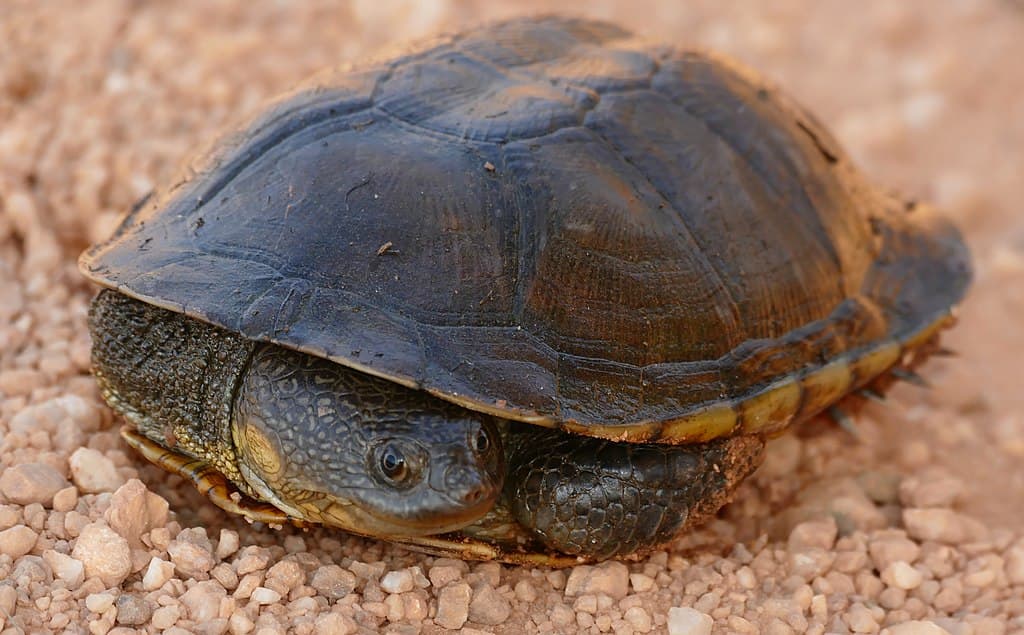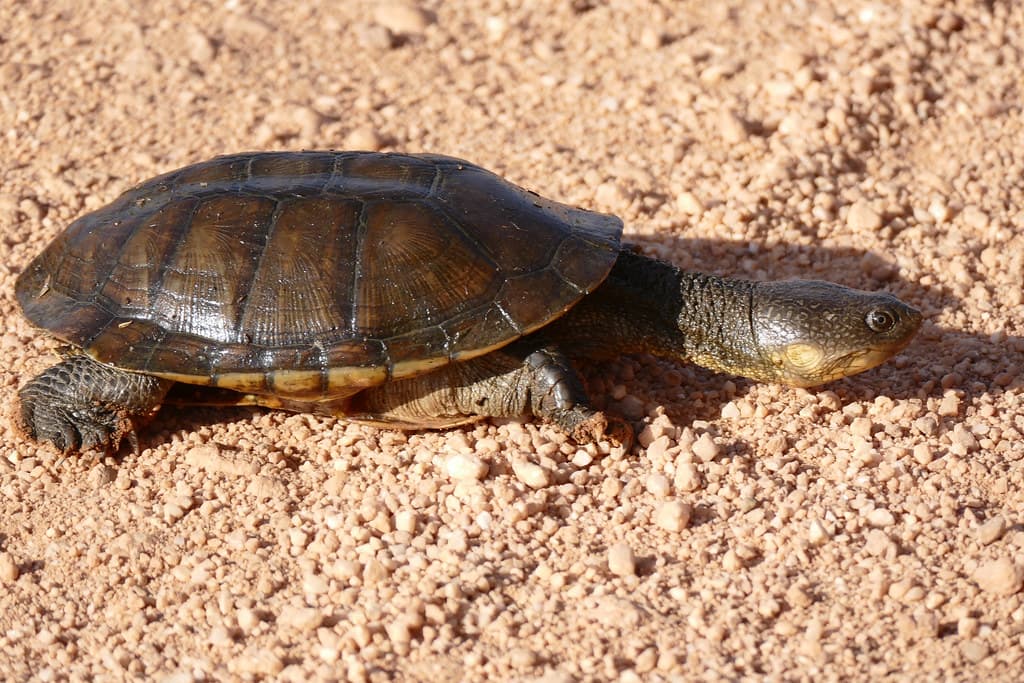Looking like a snapping turtle but smaller and not related, the big-headed turtle is not quite popular. Not many people know about them while they have so many fascinating traits that other turtles don’t. Want to find out more? Check out a quick detail about the big-headed turtle below.
Appearance

The name already suggests the appearance, and big-headed turtle is exactly what its name says. A big-headed turtle has a large head that is so big it cannot pull it completely in its shell. This could be an issue when there are predators around but these turtles also have sharp beaks and strong jaws. They will not hesitate to use those powerful jaws to snap to defend themselves against the predators. This is not all, the top of their head is heavily armed so minor attacks do not harm them. There are scutes on the top of their head to armor the skull as well as their shell.
If we take a look at the shell, a big-headed turtle has a flat and smooth carapace. This allows them to keep a low and streamlined profile in the water to prevent water current sweeping. The carapace itself is almost the same size as the head. More than that, they also have long sharp claws and long thick tail. This tail can be as long as the shell, and it sometimes acts like an extra limb for balance and navigation.
Behavior

As we all know, turtles are not much of walkers so moving long distances is not something they do. Big-headed turtles move around more during the night looking for food while avoiding predators. Not all turtles are strong swimmers, and they are one of those. However, this turtle has the ability to climb over obstacles by using its beak, claws, and tail. The tail functions as a prop to extend the reach of its strong claws that allow it to move around fast streams and rivers. Plus with the help from the beak, there are many places that big-headed turtles can go to. The most impressive place? Must the trees where they climb to bask on overhanging branches.
Another interesting thing is their unique defensive behavior that most turtles out there do not possess. When threatened, a big-headed turtle will tuck its head and legs into its shell, close its eyes, and emit a foul-smelling musk. This is one of the successful defense mechanisms that is very unique among turtles. What’s more? They are able to absorb oxygen through their skin which allows them to remain underwater for a long time.
Feeding & Habitats

When it comes to diet, big-headed turtles have quite the menu. They feed on crabs, crustaceans, fish, mollusks, snails, and worms but also aquatic plants, fruits, and other insects. Their powerful jaws allow strong bites through shells to make feeding easier. The big-headed turtle is a species that comes from Southeast Asia and Southern China. These turtles are found in Cambodia, China, Laos, Myanmar, Thailand, and Vietnam where they live in fast-flowing streams. Along with that, these freshwater turtles also inhabit waterfalls in rocky areas as well.
Threats
One of the common threats that these turtles are facing is the illegal wildlife trade for food, pets, and traditional medicine. Not to mention deforestation, habitat loss as their freshwater riverine habitats are degraded or destroyed due to damming, and water pollution. This is why their population is doing badly from year to year; hence their Endangered status.
Related Post: Things You Don’t Know About Pangolins
